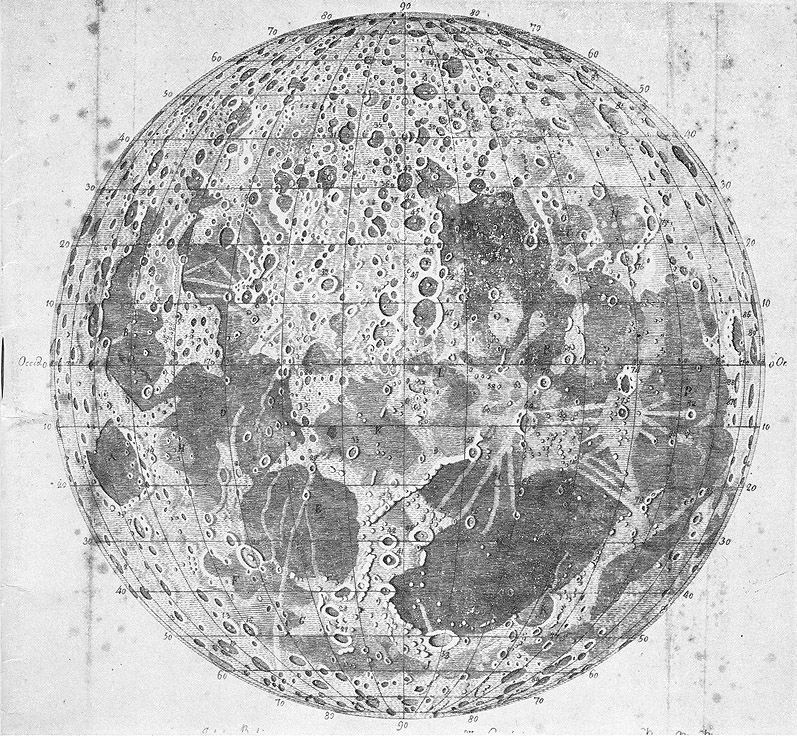
map by Tobias Mayer from A History of Lunar Studies by Ernst Both
For 65 years Tobias Mayer’s small map was the best in the world. The 7.5″ diameter map was made in 1749 but not published until 1775, 13 years after his death, and a larger 18″ version of the same map didn’t appear until 106 years later! The map above seems to be the re-engraved version that Schröter included in his 1791 book. I infer this because Mayer’s maps were the first published with north up, but Schröter printed it with south up. Mayer’s map is famous because it was the first based on measured positions - he used a micrometer to determine the positions of 24 craters with an accuracy of 1′ in latitude and longitude. The map was also widely used because it was attractive, showing all features under morning illumination. This map and some of the information here comes from a classic publication A History of Lunar Studies, published by Ernst Both in 1961. In 1999 I wrote Both and asked if I could digitize it and include it on my first lunar web page. Both, then and now at the Buffalo Museum of Science, gave permission, but it has taken me until now to actually get it online. This is the first of a series of classic lunar publications that I intend to place online. There will be more of Both’s little known lunar history papers plus G.K. Gilbert’s The Moon’s Face and others. If you know of some classics that should be included let me know (especially if you have a copy of the papers). Millions of classics are being placed online by Google and others, but they are focussing on books, whereas many important documents are smaller papers that are overlooked. They will find a home on the Lunar Classics virtual shelf.
Related Links:
Tobias Mayer.
Luisa Pigatto and Valeria Zanini (1999) Lunar Maps Of The 17th And 18th Centuries. Tobias Mayer’s Map And Its 19th-Century Edition. Earth, Moon, and Planets v. 85-86, p. 365-377.
Now you can support LPOD when you buy ANY book from Amazon thru LPOD
COMMENTS?
Click on this icon File:PostIcon.jpg at the upper right to post a comment.



